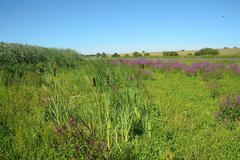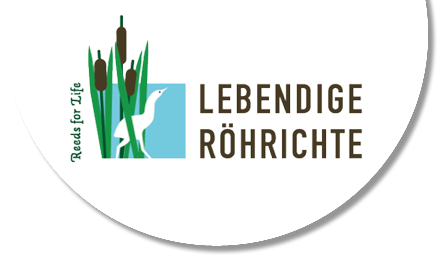Nature and Landscape
Although the Bienen Old Rhine with its highwater channel on the Rosau river meadow to the south is in the dyke foreland, it is cut off from the direct influence of the Rhine in the west by a summer dyke. The Millinger Sea, Hurler Sea and Empel Sea water bodies in the dyke hinterland are connected to the Bienen Old Rhine by a ditch. But this conducts water only some of the time.
Connection to the Rhine is via the Grietherort Old Rhine. The Bienen and Grietherort Old Rhines are connected to each other via Dornick Lock. The water level in the polder can be controlled using Dornick Lock. A fish ladder ensures that the connection remains largely passable by fish when water is flowing through.
The bodies of water connected to each other are a characteristic part of the protected area. In particular, the oxbow lakes are characterised by the typical zoning of the clear water surface, through floating leaf and reed zones to the floodplain woodland. Wide-ranging areas of grassland, which are largely extensively cultivated and are home to many typical meadow plants, are also characteristic. Pollarded trees and hedges are scattered across the grassland, thus enriching the area’s diversity.
Thanks to this diversity, the area is a valuable habitat for many species of animals. In 2017, 76 species of breeding birds were identified, including the black tern, which is at risk of extinction. The area is also of outstanding importance to resting birds. Moreover, fish, amphibians, insects and other animal species find good living conditions here.
Neuigkeiten
Ausstellung im Rheinmuseum

Im Rheinmuseum Emmerich findet am 25. April eine Lesung "Der Rhein" - Biographie eines Flusses mit…
Termine

Expedition ins lebendige Röhricht - Pflanzen und Tiere am Ufer des Bienener Altrheins entdecken
01.09.2024 10:00 - 12:30
Referenten: Martin Brühne, Achim Vossmeyer Treffpunkt: Naturschutzzentrum im Kreis Kleve, Niederstraße 3, 46459 Rees-Bienen Gebühr: kostenlos Anmeldung: 02851 / 96330 [...]
More





